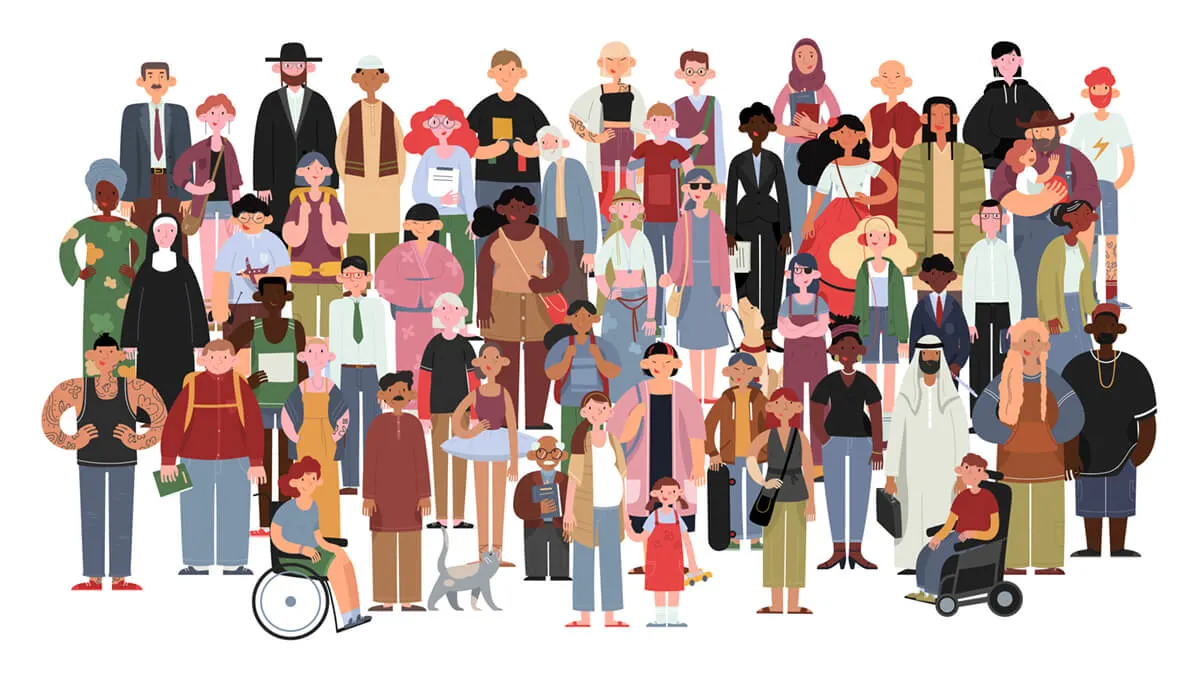In Part 1 of this essay miniseries, I laid out how, if we are to believe that the curse of Laman wasn’t not related to skin color - as was the assumption for most of the history of the LDS church. LDS scripture, however, does not stop at describing a Lamanite “curse.” It describes two other divine generational judgments: a “curse of Ham,” and a “curse of Cain.” Here’s the scriptural precedent for both other curses:
The Curse of Cain
In the Book of Moses - the beginning of Joseph Smith’s ‘inspired translation’ of the King James Bible - God proclaims a curse on Cain, his children, and whoever kills them (Moses 5:40-41,47-52,56). When the patriarch Enoch is given his vision of the cosmos, God shows him that the seed of Cain has no place among the seed of Adam, with the explanation, “for the seed of Cain were black” (Moses 7:22). Somewhat surprisingly, the inspired translation never makes clear what is meant by that phrase.
The Curse of Ham
This superstition existed independently and previously to Mormonism, a result of Genesis 9, where Noah proclaims a curse on Canaan, Ham’s son; but as Ham was said to be the principal ancestor of Egypt and traditionally believed to be the originator of all African peoples, there was rampant speculation as to what the curse entailed, and it was often used as an excuse for the later African slave trade at the hands of European imperialism and colonization. This was later canonized into LDS scripture, this time in the Book of Abraham: that “Pharaoh being of that lineage by which he could not have the right of Priesthood, notwithstanding the Pharaohs would fain claim it from Noah, through Ham” (Abraham 1:27).
What’s especially odd is that both of these “Biblical” curses end up being conflated in the early Mormon church by Brigham Young, who proclaimed the African race to be the “seed of Cain,” which is not possible as Noah and his children were the only survivors of the flood. Unless Noah allowed one of children to marry one of the seed of Cain, which the Book of Moses laboriously explains was not allowed, the race of Cain would have all been drowned. (I believe some LDS leaders attempted to resolve this discrepancy by suggesting some seed of Cain clung onto the ark. Yes, dear reader, I had a similar reaction.)
Let’s look at the common characteristics of these curses:
- all three are a direct consequence of abandoning the “correct” tradition.
- all three originate with one man but are applied to anyone who “mingles” with them.
- all three indicate a dehumanized state, making those people than the “good” family lines.
- all three suggest a “darkness” or “blackness,” with modern faithful interpretations disavowing the literal sense of the terms.
But most importantly? All three curses apply in LDS theology to people who were subjugated, enslaved, or exterminated by colonial Europeans and Americans.
In other words, have you noticed that there are no curses in LDS theology relating to white people? Or Asian people? There are no curses mentioned against Scottish, Irish, Scandinavian, or Greek peoples. It would have been easy to construct a “curse” that all Gentile nations were kept from the gospel prior to the resurrection of Jesus, and yet no such curse exists anywhere in LDS scripture or teachings.
Does that not strike you as somehow very odd?
And here’s another question: are any of these curses still in effect? Some may say, “Yes, because we are all cursed until we repent,” but this isn’t the curse from the fall of Adam (which I’ll get to in part 3), this is about the specific secondary curses supposedly uttered by God against these populations and on their posterity. Where are they? Can you point to a single evidence of that curse? Can you tell me one quality about any group of people that makes them “loathsome”?
Hopefully there was at least some level of discomfort in even considering these questions, as they were certainly uncomfortable to me when I first considered them. The only conclusion I could come to as a faithful member of the LDS church was that these curses, whenever they were applied, ended well before my lifetime. Perhaps you could appeal to God’s declaration in that he will “punish[] children for the iniquity of parents to the third and the fourth generation of those who reject me” (see Exodus 20:5), but all of these curses lasted in LDS scripture far longer than that!
I am once again compelled to point out that these curses cannot be real. There is just as little (i.e., zero) evidence that these curses exist, and as they can be explained naturalistically, the curse must have been just as much an excuse by those ancient authors as they were for those more recent humans who needed a reason to see these peoples as “lesser” or “cursed” in order to justify their subjugation and eradication.
And of course, I’m saying all of this from the perspective of being a descendant of white Europeans. I’m neither able nor willing to speak for the experiences of other people groups, and barely qualified to speak about my own people group as some monolith of history or identity. I can only describe my experience and evolving relationship with the traditions I was raised with, but now that I have reached the root of the problem, it’s impossible for me to unsee how much I was inculcated from birth with the understanding I was going to “save” all “cursed” peoples, that my privilege was an “honor” and a “burden”…with no regard for the beams in my own eye until I had rejected this as a “charitable service” but instead as an instrument of ideological violence.
We have always been human, and not one of us is anything more or less. Segue to part 3!




